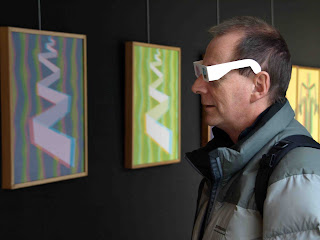


We awoke in Amboise to a clear sky and a low temperature of -5 degrees. The frost was something to behold. It took twenty minutes for the car heater to clear the windscreen and in places where the sun shone the frost was gone by lunchtime, but in places where there was no sun, the frost remained all day. In Australia we go to ridiculous lengths to whiten the ends of Christmas trees and in Amboise the trees were naturally white, with what looked like snow, but was actually a very thick frost.
The main events of the day were visits to several of the Loire Valley’s famous chateaux. The first, Chateau de Chenonceau, was built across the Cher River in the 13th Century and at one time was given to Henry ll’s mistress, Diane de Poitiers, as a gift. After Henry’s death his wife Catherine Medici demanded it back and extended it so that it resembled her hometown of Florence. English castles are grandly impressive, but French Chateaux are simply beautiful. The second chateau we visited was our next door neighbour in Amboise, Chateau d’ Amboise. Only one fifth of this magnificent building remains standing but we were overawed. The gardens were formal with slopes covered with elegant box topiary, wonderful rows of white pots, and orderly trees that had been uniformly pruned and the occasional stretch of frosty lawn (not to be walked upon, of course).
Once again our treat on this day was for our stomachs. Breakfast at our accommodation was so plentiful that we had enough left over for a very chilly picnic next to a ruined chateau on top of Montrichard. Dinner was a gastronomically one-off 7 course degustation (no choice given but a small serve of whatever the chef had prepared using produce that was in season). Here is our rough translation of what we think we ate.
1. Bread of course, then pumpkin soup with truffles. Yum!
2. Fois Gras (‘fat liver’ made from the liver of a duck that has been especially fattened) with raspberry jam and toasted baguette with a sprinkle of salt and sugar. Sounds odd but surprisingly delicious.
3. Tandori scallops and cabbage. Even better!
4. Lobster cappuccino with cayenne pepper! Yes, you read correctly and it was good.
5. Beef fillet with mashed potato. So tender and flavorsome!
6. Dessert (a degustation all of its own) – pear, almond ice-cream, chocolate tart, crème brulee, passionfruit custard, pineapple, chocolate cake and ginger. All to die for!
7. And lastly an apple crumble, which was only 2cm in diameter, and served with a cream and egg chaser.
8. We passed on the optional cheese platter.
All very reasonably priced and paid for with a birthday gift from Richard’s mum. Thanks Mum! How do the French remain so slim?











































